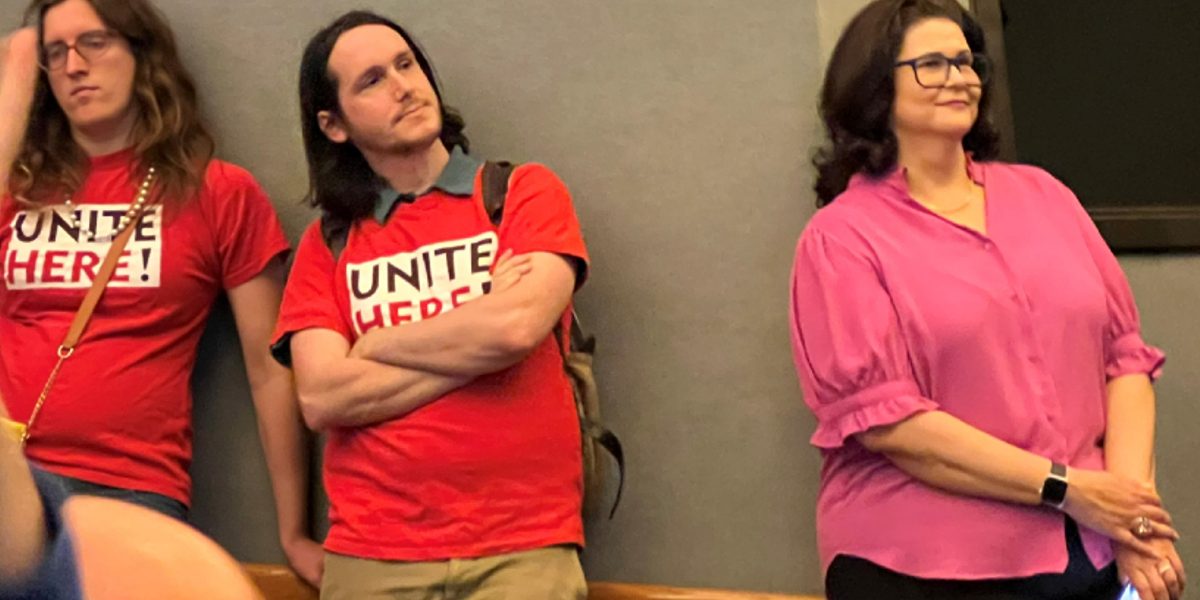The COVID pandemic shutdown gutted the membership rolls of UNITE-HERE – the militant hotel workers union – in California, where the union has three locals. While two of the locals have largely recovered, membership in Los Angeles-based Local 11 remains far below pre-pandemic levels.
Local 11’s anemic membership growth could be a major driver of its sponsorship of a ballot measure to impose a costly web of huge wage hikes and complicated work rules on Anaheim hotels and event centers: the initiative allows them to escape these costly provisions by unionizing.
There are two other UNITE-HERE locals in California: San Francisco-based Local 2 and San Diego-based Local 30. While all three suffered membership and revenue losses, Locals 2 and 30 have largely rebounded while Local 11 is still well under pre-pandemic membership levels.
Labor union locals (except those solely representing state, county, or municipal employees) must file an annual report known as an LM-2 with the U.S. Department of Labor, which disclose information such as membership, payroll, revenues, and expenditures, liabilities and assets, and other financial and operations information.
The pandemic caused Local 2’s membership to drop 72% by the end of 2020: from 12,045 members to 3,342 members. By the end of 2022, the union had recovered to 11,874 members. It’s total revenues were $11,264,142 at the end of 2019, and stood at $10,943,995 at the end of 2022 – nearly back to pre-pandemic levels.
Local 30 entered the pandemic with 4,181 members and weathered 2020 relatively intact before dropping to 2,835 members by the close of 2021. As the shutdown lifted, its membership snapped back to pre-pandemic levels at 4,014. Local 30’s revenues were $4,944,810 before the pandemic and had climbed back to $4,030,495 by the end of 2022.
Neither local raised its membership dues during that period.
UNITE-HERE Local 11 Lags Far Behind
Local 11 has not staged a similar recovery.
Like its sister locals, UNITE-HERE Local 11’s membership rolls tanked during the pandemic shutdown, shrinking more than 70% from 28,649 to 8,440 at the end of 2020.
Unlike Locals 2 and 30, however, Local 11’s membership numbers remain sharply below their pre-pandemic numbers, standing at 20,394 at the close of 2022.
The Center for Union Facts, a watchdog group that tracks UNITE-HERE, noted some key differences between how the senior leadership of the three locals manage themselves.
For example, Local 11’s three co-presidents gave themselves large pay raises during the depths of the pandemic, even as their members experienced mass unemployment.
Co-president Ada Briceño got a 10.5% salary boost in 2021, from $118,005 to $130,431 – which followed a $4,000 pay bump in 2020.
Co-presidents Susan Minato and Kurt Peterson got 16% pay raises in 2021, each going from $116,587 to $135,122.
Peterson’s daughter Hannah, who is on the UNITE-HERE Local 11 payroll, received a 7.7% pandemic pay hike, from $58,839 to $63,423.
While Local 11 leaders gave themselves pay raises, the leadership of Locals 2 and 30 took pay cuts. Local 2 President Anand Singh’s pay was cut by 10%, from $96,673 to $86,814.
Local 2 Vice President Luis Cuellar and Secretary-Treasurer Tina Chen took 9% and 4% pay cuts, respectively.
Singh received a small bump in 2022 but his salary remains significantly below its pre-pandemic level.
Local 30’s president and secretary-treasurer took pay cuts of 54% and 44%, respectively.
Local 11 Raised Union Dues While Its Members Were Being Laid Off
Local 11 managed to keep revenues relatively stable during the pandemic even as its membership rolls shriveled, in large part by selling old off nearly $14 million of the union’s investments and assets during 2020-2022.
Local 11 also raised members’ dues by 20% during the pandemic, escalating from a minimum/maximum of $28/$71 per month month when the pandemic hit to $40.40/$85.50 by 2022. Initiation fees were also increased.
In contrast, Local 2 and 30 did not raise dues – and still managed to increase dues revenues. According to an analysis by the Center for Union Facts:
“Consider Local 2 and Local 30, which reported membership increases of 78% and 41% in 2022, respectively. Local 2’s overall dues collection increased by almost 120%. Local 30’s increased by almost 50%. And neither union raised the cost of membership dues in 2022.”
Despite increasing dues and selling of investments and assets, the watchdog group found Local 11 to be less financially sound than the other California locals:
“Overall, Local 2 and Local 30 also ended 2022 on much firmer financial ground than Local 11. Local 2 saw a drop in its total liabilities in 2022, while Local 30 maintained a moderate rate of debt. Local 11 already had liabilities amounting to $6 million at the beginning of 2022. By the end of the year, that had increased to almost $9 million.”

“Local 11 is a long way from bouncing back after the pandemic, especially when it comes to membership,” said Charlyce Bozello, president of the Center for Union Facts. “Perhaps the union’s abysmal track record, including higher dues for members, consistent and substantial raises for leadership, and payouts to its favorite front groups, has something to do with its slow recovery.”
Critics View Anaheim Ballot Measure As A Play To Boost Dues Revenue
Local 11’s membership woes are seen by many as the real reason behind the union’s Anaheim ballot measure – which would impose a raft of complicated and extremely costly wage and work rules on every hotel and event center in the city.
Often overlooked in the media is the escape hatch Local 11 built into its ballot measure: affected businesses can have the initiative’s provisions waived by mutual agreement with the union in the form of a collective bargaining agreement.
There are more than 160 hotels in Anaheim – more than in any other Orange County city. Only five of them are unionized. In fact, UNITE-HERE Local 11 has not unionized an Anaheim hotel in nearly 30 years. Contrast Local 11’s failure to re-build membership to pre-pandemic levels while its sister locals have already recovered and are in better financial condition – and it begins to call Co-President Ada Briceno’s leadership of the union into question.
Briceno also serves as chair of the Democratic Party of Orange County. Party insiders and activist often wonder where one position ends and the other begins. It’s an open secret in Democratic Party circles that Briceno harbors ambitions to follow the path blazed by state Sen. Maria Elena Durazo and make the leap from union boss to state legislator.
Winning passage of Local 11’s ballot measure could mask Briceno’s failure to organize a single Anaheim hotel since becoming co-president by compelling hotels to unionize with a figurative gun and their heads. In that context, Local 11’s ballot measure is perhaps best understood as a desperate ploy by Briceno to stave off challenges to her leadership.


